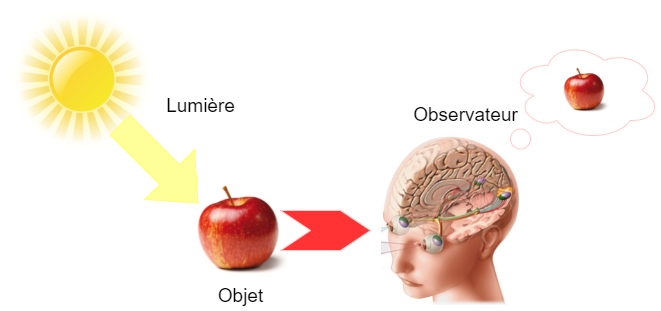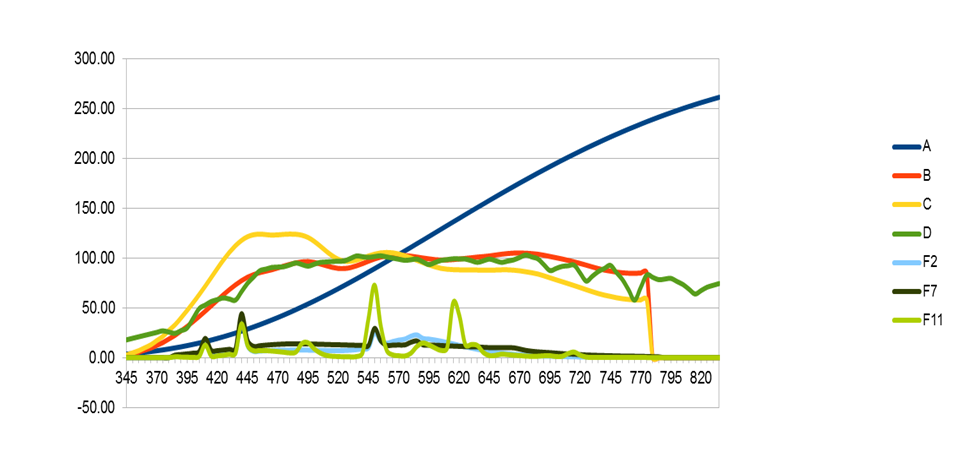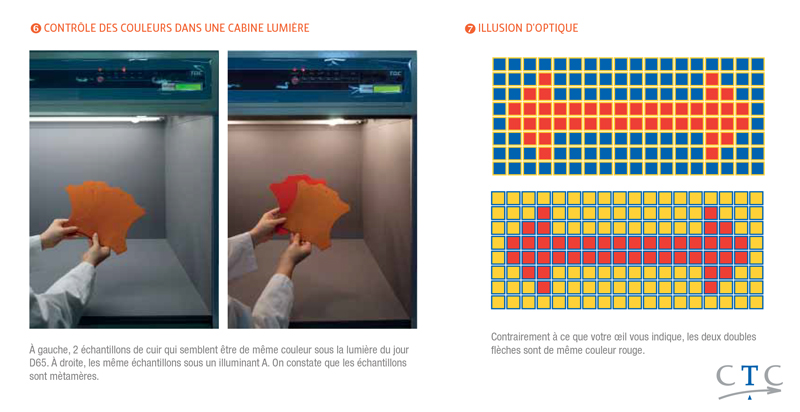Standard and Observer illuminants
Generally speaking, the perception of the color of an object involves three elements: the light source, the object itself and the observer.
The spectrum of light
To fully understand how each other plays a role in perceived color, let's follow the transformation of the spectrum of light as it travels from its source to our eye
The spectrum represents the variations in intensity of the electromagnetic waves that form light, depending on their wavelength.
The spectrum of light emitted by a source depends on the type of source: it differs depending on whether it is the sun, a halogen lamp, a fluorecent tube, etc.
The light, the object and the observer

By reflecting light, the object modifies this spectrum.
Indeed, it absorbs part of the wavelengths of the incident light and returns the others by specular reflection (as on a mirror and diffuse reflection (in all directions), and possibly by other phenomena such as interference and diffractions
If the object appears blue, for example, it is either because it absorbs all wavelengths, except those corresponding to blue. Or because an interference phenomenon favors the corresponding wavelengths to blue.
Color varies depending on illuminant
The color of an object depends on the light shining on it.
The object diffuses certain colors that it receives.
It absorbs others and does not send them back.
This is due to the nature of the objects or our environment.
Color perception (Observer)
The perception of colors varies with
• The observation distance:
• the distance blurs the colors, the proximity revives the colors
Standard illuminants
- CIE Illuminant A is used to represent the typical light of a
tungsten filament from a household bulb - the illuminant TL84 symbolizes fluorescent lamps in shop windows
- Illuminants B and C are daylight simulators B: 4874 KC: 6774 K
- The Illuminant E is a radiator with equal energy
- Illuminant D (D50, D55, D65, etc.) Standardized daylight
- F series are fluorescent lamps
Most businesses these days have color control booths, also known as light booths.
These booths allow color control of samples in a neutral and controlled environment.
In fact, in order to establish a certain harmony in the methods of color control, the CIE recommends in particular the use of standardized light sources, called illuminants, on a uniform background:
The use of several illuminants makes it possible in particular to identify the presence of metameric samples. This is because two samples of a similar color under one lighting (for example daylight D65) may appear different in color under another lighting (for example bulb A).
The use of light booths is a real advance in color control.
However, the observer element remains an uncontrolled subjective parameter.
Indeed, as explained previously, the observer captures, analyzes and processes the received signal.
However, it sometimes happens that our colorful feeling is distorted by the surroundings.
Thus, the existence of an optical illusion testifies to an erroneous visual perception and the interpretation of it by the brain can sometimes be altered.
This is why, to reduce the impact of such phenomena, certain good practices should be observed when using light booths, such as a uniform background.
The color illusions are very numerous and very impressive.
These are the background colors that will influence our perception.
In conclusion
The interpretation of the color depends on parameters such as:
- The type of light source
- Light intensity
- From the viewing angle
- Of the environment
- From the observer
- Observation distance
To master the color, you must first master the light


